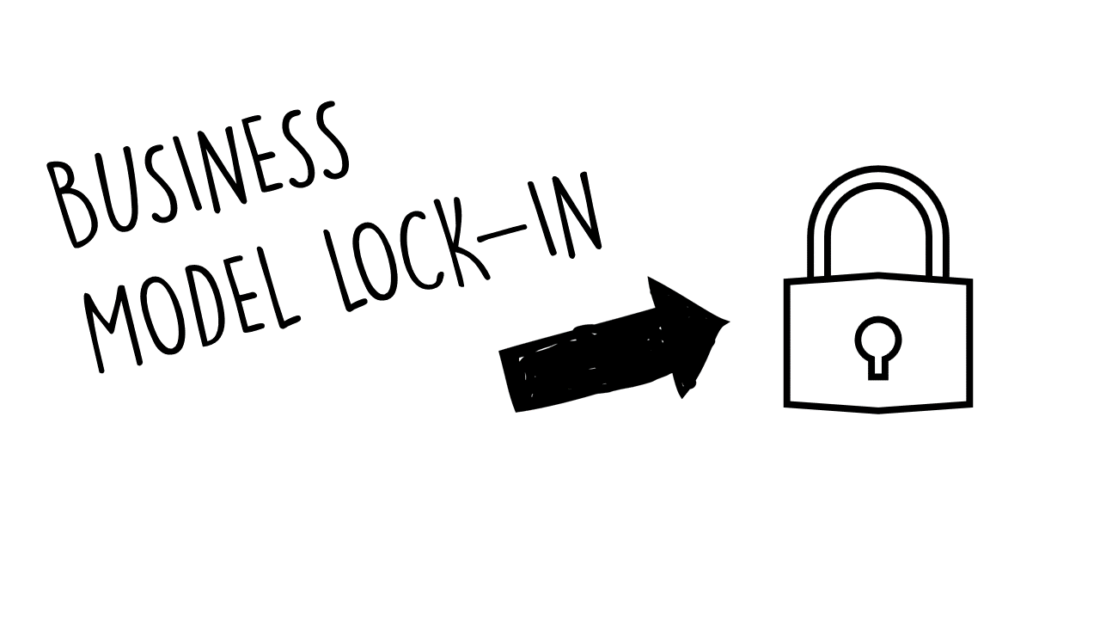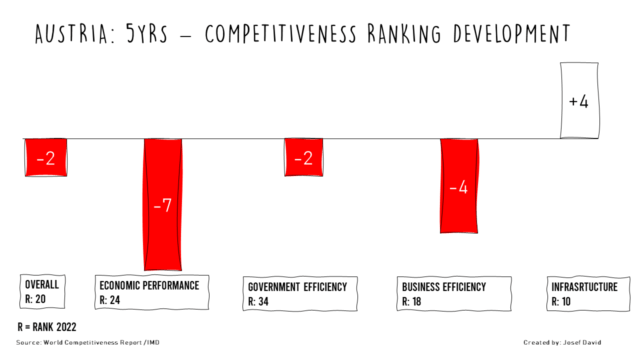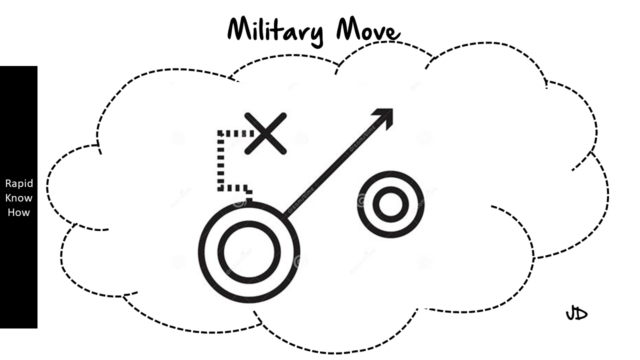Introduction
The industrial gases industry plays a crucial role in various sectors, including manufacturing, healthcare, and energy. These gases, such as oxygen, nitrogen, and carbon dioxide, are essential for a wide range of applications, from welding and cutting to medical treatments and food preservation. As the demand for industrial gases continues to grow, companies in this sector face the challenge of breaking free from business model lock-in.
Business model lock-in refers to a situation where a company becomes trapped in its existing business model, making it difficult to adapt to changing market conditions or explore new opportunities. This can be due to various factors, such as high capital requirements, limited customer switching costs, and resistance to change within the industry. In order to thrive in a rapidly evolving market, industrial gases companies need to find innovative strategies to overcome business model lock-in.
Understanding the concept of business model lock-in in the industrial gases industry
Business model lock-in occurs in the industrial gases industry when companies become heavily invested in a particular business model that is difficult to change or replicate. This can be due to the high capital requirements and infrastructure investments involved in producing and distributing industrial gases. Once these investments are made, it becomes challenging for companies to switch to a different business model without incurring significant costs.
There are several common business models in the industrial gases sector. One of the most prevalent is the on-site supply model, where companies build and operate large-scale production plants near customer facilities. This allows for a reliable and continuous supply of gases tailored to specific customer needs. Another common model is the merchant supply model, where companies produce gases centrally and distribute them through a network of storage and distribution facilities.
The challenges faced by industrial gases companies in breaking free from business model lock-in
Breaking free from business model lock-in is not an easy task for industrial gases companies. There are several challenges that they face in this process.
Firstly, high capital requirements and infrastructure investments pose a significant barrier to change. Building and operating production plants, storage facilities, and distribution networks require substantial upfront investments. This makes it difficult for companies to switch to a different business model without incurring significant costs.
Secondly, limited customer switching costs make it challenging for industrial gases companies to attract and retain customers. Unlike some industries where customers may face high switching costs, such as in the telecommunications or banking sectors, customers in the industrial gases industry can easily switch suppliers if they find better prices or services elsewhere. This makes it difficult for companies to lock in customers and maintain a stable revenue stream.
Lastly, there is often resistance to change within the industry. Industrial gases companies have traditionally operated in a conservative and risk-averse manner, focusing on long-term contracts and established relationships with customers. This can make it challenging for companies to embrace new business models or adopt innovative strategies.
Exploring innovative strategies to overcome business model lock-in in the industrial gases sector
While breaking free from business model lock-in is challenging, there are several innovative strategies that industrial gases companies can explore to overcome these barriers.
One strategy is diversification into new markets and industries. By expanding their product offerings and targeting new customer segments, companies can reduce their reliance on a single business model and tap into new sources of revenue. For example, some industrial gases companies have entered the renewable energy sector by providing gases for the production of biofuels or hydrogen fuel cells.
Another strategy is the adoption of new technologies and processes. Advances in technology, such as automation, data analytics, and artificial intelligence, are transforming the industrial gases industry. Companies that embrace these technologies can improve operational efficiency, reduce costs, and enhance customer service. For example, some companies are using sensors and IoT devices to monitor gas usage in real-time and provide predictive maintenance services.
Additionally, focusing on value-added services and solutions can help industrial gases companies differentiate themselves from competitors and break free from business model lock-in. Instead of just selling gases, companies can offer additional services, such as gas management systems, equipment rental, and technical support. This can create a more integrated and holistic solution for customers, making it harder for them to switch suppliers.
Leveraging technology and digitization to disrupt traditional business models in the industrial gases industry
Technology and digitization are playing a significant role in disrupting traditional business models in the industrial gases industry. Companies that embrace these advancements can gain a competitive edge and overcome business model lock-in.
One example of how technology is transforming the industry is the use of remote monitoring and control systems. These systems allow companies to monitor gas production, storage, and distribution processes in real-time from a central control room. This improves operational efficiency, reduces downtime, and enhances safety.
Another example is the adoption of digital platforms for ordering and managing gas supplies. Instead of relying on manual processes and paperwork, customers can now place orders online, track deliveries, and access usage data through web-based portals or mobile apps. This improves convenience and transparency for customers while reducing administrative costs for companies.
However, there are also challenges associated with digital transformation in the industrial gases sector. One challenge is the need for robust cybersecurity measures to protect sensitive data and ensure the integrity of critical infrastructure. As companies become more reliant on digital systems, they need to invest in cybersecurity technologies and practices to mitigate the risk of cyberattacks.
Embracing sustainability and environmental considerations as a driver for business model transformation in industrial gases companies
Sustainability has become a key driver for business model transformation in the industrial gases industry. As concerns about climate change and environmental impact grow, companies are under increasing pressure to reduce their carbon footprint and adopt more sustainable practices.
One way that industrial gases companies can innovate their business models is by investing in renewable energy sources. For example, some companies are exploring the production of hydrogen gas using renewable energy sources, such as wind or solar power. This not only reduces greenhouse gas emissions but also creates new revenue streams in the renewable energy sector.
Another opportunity for business model innovation is the development of carbon capture and storage (CCS) technologies. These technologies capture carbon dioxide emissions from industrial processes and store them underground, preventing them from entering the atmosphere. Industrial gases companies can play a crucial role in the development and deployment of CCS technologies, creating new business opportunities while addressing climate change.
Collaborative partnerships and alliances as a means to break free from business model lock-in in the industrial gases sector
Collaborative partnerships and alliances can be an effective means for industrial gases companies to break free from business model lock-in. By working together with other companies, organizations, or research institutions, companies can leverage their collective resources, expertise, and networks to explore new business models and opportunities.
One benefit of collaboration in the industrial gases industry is the ability to share infrastructure and resources. For example, companies can collaborate on the construction and operation of production plants or storage facilities, reducing capital requirements and risks. This allows companies to explore new markets or expand their product offerings without making significant investments on their own.
Another benefit is the access to new markets and customer segments through partnerships with complementary businesses. For example, an industrial gases company could partner with a technology company to develop innovative solutions for a specific industry or application. This allows companies to tap into new sources of revenue and diversify their customer base.
There are several successful examples of partnerships and alliances in the industrial gases sector. For instance, Air Liquide, a leading industrial gases company, has formed strategic partnerships with automotive manufacturers to develop hydrogen fuel cell technologies for electric vehicles. This collaboration has helped accelerate the adoption of hydrogen fuel cells as a clean energy solution.
The role of customer-centricity in redefining business models for industrial gases companies
Customer-centricity plays a crucial role in redefining business models for industrial gases companies. By understanding and addressing customer needs and preferences, companies can create value-added solutions that differentiate them from competitors and break free from business model lock-in.
One strategy for becoming more customer-centric is to conduct in-depth market research and analysis. This involves understanding customer requirements, pain points, and buying behaviors. By gathering insights from customers, companies can identify opportunities for innovation and develop tailored solutions that meet their specific needs.
Another strategy is to focus on customer experience and satisfaction. This involves providing excellent customer service, timely delivery, and reliable support. Companies can also invest in digital platforms and tools that enhance the customer experience, such as online ordering systems, self-service portals, and real-time tracking.
Furthermore, companies can engage with customers through co-creation and collaboration. By involving customers in the product development process, companies can gain valuable insights and feedback that can inform their business model innovation efforts. This also helps build strong relationships with customers and fosters loyalty.
Case studies of successful business model transformation in the industrial gases industry
There are several examples of companies in the industrial gases industry that have successfully overcome business model lock-in through innovative strategies.
One such example is Linde plc, a global industrial gases company. Linde has diversified its business model by expanding into new markets and industries. For instance, the company has entered the healthcare sector by providing medical gases and equipment to hospitals and clinics. This diversification has helped Linde reduce its reliance on traditional industrial customers and tap into new sources of revenue.
Another example is Air Products and Chemicals Inc., a leading industrial gases company. Air Products has embraced technology and digitization to transform its business model. The company has developed a digital platform called “Air Products Express” that allows customers to order gases online, track deliveries, and access usage data in real-time. This has improved convenience for customers while reducing administrative costs for the company.
Regulatory and policy considerations in driving business model innovation in the industrial gases sector
Regulations and policies play a significant role in driving business model innovation in the industrial gases sector. Governments and regulatory bodies can create an enabling environment that encourages companies to explore new business models and adopt innovative practices.
One way that regulations can drive business model innovation is through incentives and subsidies. For example, governments can provide financial incentives or tax breaks to companies that invest in renewable energy sources or adopt sustainable practices. This encourages companies to explore new business models that align with environmental goals.
Another way is through the establishment of standards and regulations that promote sustainability and environmental responsibility. For instance, governments can set emissions targets or impose carbon pricing mechanisms that incentivize companies to reduce their carbon footprint. This creates a market demand for innovative solutions and drives business model transformation.
Furthermore, governments can support research and development efforts in the industrial gases sector through funding or grants. This helps companies overcome the high capital requirements associated with business model innovation and encourages collaboration between industry players, research institutions, and academia.
The future outlook for industrial gases companies: Embracing change and staying ahead of business model lock-in
The industrial gases industry is undergoing significant changes, driven by technological advancements, sustainability considerations, and evolving customer demands. In order to stay competitive and adapt to these changes, industrial gases companies need to embrace business model innovation and break free from lock-in.
One trend shaping the industry is the increasing demand for clean energy solutions. As countries around the world strive to reduce their carbon emissions and transition to a low-carbon economy, there is a growing need for hydrogen gas as a clean energy carrier. Industrial gases companies that can provide hydrogen produced from renewable sources will be well-positioned to capitalize on this trend.
Another trend is the rise of digitalization and automation in the industry. Companies that embrace technologies such as IoT, data analytics, and artificial intelligence can improve operational efficiency, reduce costs, and enhance customer service. This allows them to stay ahead of competitors and break free from traditional business models.
Furthermore, the industry is likely to see increased collaboration and partnerships between industrial gases companies and other stakeholders, such as technology companies, research institutions, and governments. These collaborations can drive innovation, create new business opportunities, and help companies overcome business model lock-in.
Conclusion
In conclusion, business model lock-in poses a significant challenge for industrial gases companies. However, by embracing innovative strategies such as diversification, technology adoption, and customer-centricity, companies can break free from lock-in and thrive in a rapidly evolving market. Leveraging technology and digitization, embracing sustainability considerations, forming collaborative partnerships, and focusing on customer needs are key drivers for business model transformation in the industrial gases sector. By staying ahead of change and embracing business model innovation, industrial gases companies can position themselves for long-term success.




